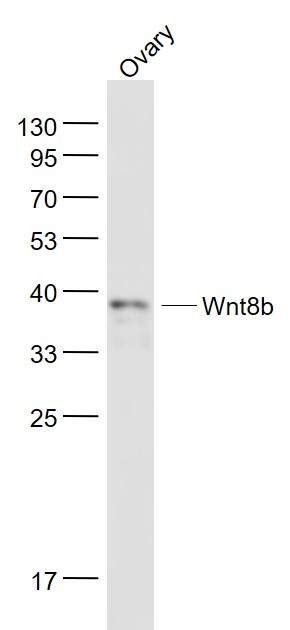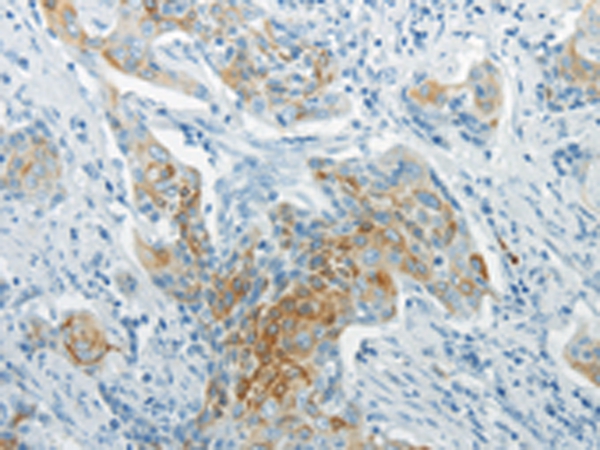
The image on the left is immunohistochemistry of paraffin-embedded Human cervical cancer tissue using CSB-PA043432(WNT8B Antibody) at dilution 1/20, on the right is treated with synthetic peptide. (Original magnification: x200)
WNT8B Antibody
CSB-PA043432
ApplicationsELISA, ImmunoHistoChemistry
Product group Antibodies
ReactivityHuman
TargetWNT8B
Overview
- SupplierCusabio
- Product NameWNT8B Antibody
- Delivery Days Customer20
- ApplicationsELISA, ImmunoHistoChemistry
- CertificationResearch Use Only
- ClonalityPolyclonal
- ConjugateUnconjugated
- Gene ID7479
- Target nameWNT8B
- Target descriptionWnt family member 8B
- Target synonymsprotein Wnt-8b, epididymis secretory sperm binding protein, wingless-type MMTV integration site family, member 8B
- HostRabbit
- IsotypeIgG
- Protein IDQ93098
- Protein NameProtein Wnt-8b
- Scientific DescriptionThe WNT gene family consists of structurally related genes which encode secreted signaling proteins. These proteins have been implicated in oncogenesis and in several developmental processes, including regulation of cell fate and patterning during embryogenesis. This gene is a member of the WNT gene family. It encodes a protein which shows 95%, 86% and 71% amino acid identity to the mouse, zebrafish and Xenopus Wnt8B proteins, respectively. The expression patterns of the human and mouse genes appear identical and are restricted to the developing brain. The chromosomal location of this gene to 10q24 suggests it as a candidate gene for partial epilepsy.
- ReactivityHuman
- Storage Instruction-20°C or -80°C
- UNSPSC41116161






